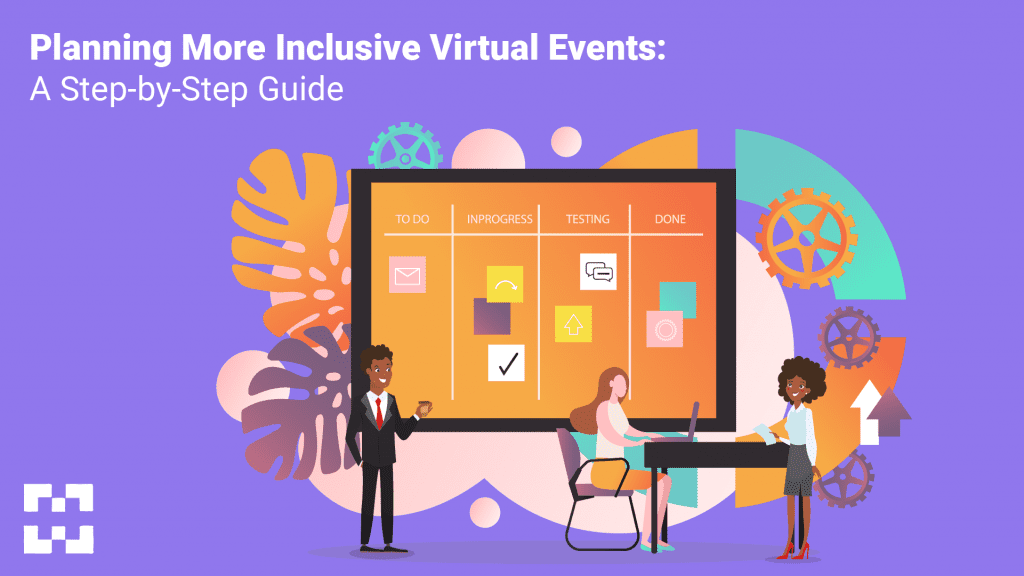
Introduction
In our increasingly interconnected world, virtual events have become an essential means of communication and collaboration. From webinars and virtual conferences to online workshops and social gatherings, these digital gatherings offer a convenient way to connect with people across the globe. However, for virtual events to be truly successful, they must be inclusive, welcoming participants from diverse backgrounds and abilities. In this blog, we’ll explore how to plan more inclusive virtual events, ensuring that everyone feels valued and can participate fully.
Step 1: Define Your Goals and Objectives
Before diving into the nitty-gritty of planning, start by defining your event’s goals and objectives. Understanding the purpose of your virtual event will guide your decisions throughout the planning process. For instance, are you hosting a webinar to educate a diverse audience on a particular topic, or are you organizing a social gathering to celebrate a shared interest? Knowing your goals will help you tailor the event to the needs of your target audience.
Step 2: Know Your Audience
To ensure inclusivity, it’s crucial to understand your audience. Who will be attending your virtual event? What are their needs, preferences, and expectations? Consider demographics, language preferences, and accessibility requirements. This information will help you customize the event to meet the diverse needs of your participants.
Step 3: Choose an Inclusive Platform
Selecting the right virtual event platform is key to fostering inclusivity. Ensure the platform you choose offers features like closed captioning, screen reader compatibility, and multilingual support. Test the platform’s accessibility features to guarantee a seamless experience for all attendees. If your event involves interactive elements, such as polls or breakout sessions, ensure they are designed with inclusivity in mind.
Step 4: Create Accessible Content
When creating event content, prioritize accessibility. Use clear and simple language in all communications. Provide transcripts, captions, or sign language interpreters for videos and presentations. Ensure your visuals are high-contrast and easily readable, and provide alternative text for images. Additionally, consider offering content in multiple formats to accommodate different learning styles.
Step 5: Promote Early Registration and Outreach
To maximize inclusivity, encourage early registration and outreach. By allowing participants to sign up in advance, you can gather information on accessibility requirements and accommodate them ahead of time. Make sure your marketing and outreach materials reach a broad audience and are available in multiple languages, if applicable.
Step 6: Develop a Code of Conduct
Establish a code of conduct for your virtual event that explicitly outlines expectations for behavior and interaction. This sets a tone of inclusivity, respect, and safety for all participants. Enforce the code of conduct consistently and provide clear reporting mechanisms for addressing any issues that may arise.
Step 7: Plan for Engagement and Interaction
Design your event to encourage engagement and interaction among participants. Consider diverse ways for attendees to interact, such as chat rooms, discussion forums, and Q&A sessions. Encourage everyone to participate and express themselves, and provide ample opportunities for networking and community building.
Step 8: Offer Flexible Scheduling
Recognize that your audience may span different time zones and have varying commitments. Try to schedule your virtual event at a time that accommodates as many participants as possible. Alternatively, consider offering on-demand content for those who cannot attend live.
Step 9: Gather Feedback
After your virtual event concludes, seek feedback from participants. Ask them about their experiences and what can be improved to enhance inclusivity. Use this feedback to refine your future events.
Conclusion
Planning more inclusive virtual events is not just about ticking checkboxes; it’s about fostering an environment where everyone feels welcome and valued. By following these steps, you can create virtual events that cater to the diverse needs of your audience, leaving a positive and lasting impression. Inclusivity is not just a concept but a commitment to ensuring that no one is left behind in the virtual world.





